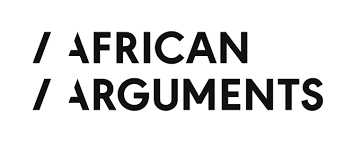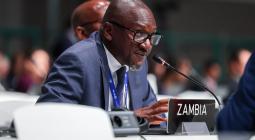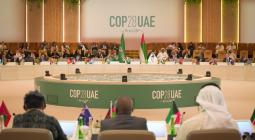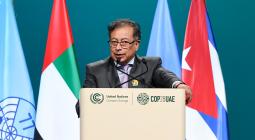Schrodinger’s COP: How’s Africa faring at the climate talks at halftime?
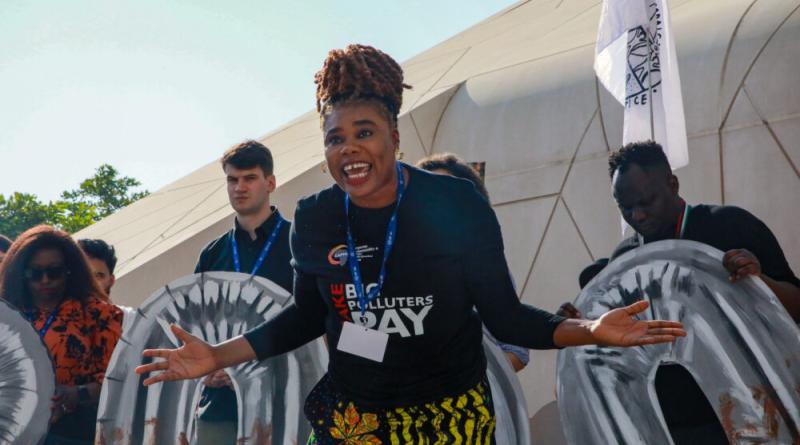
The COP28 climate talks in Dubai are scheduled to run from 30 November to 12 December. At the halfway point, we unpick the progress (and lack thereof) so far in terms of the key priorities of African and many other developing countries.
Adaptation
If climate change were a fire working its way through a building, then attempts to slow its spread before it gets too far would be mitigation. Attempts to survive and adapt amid the fire would be adaptation.
For decades, global climate action — led by the people who started the fire but who are furthest from it — has focused heavily on mitigation (i.e. reducing emissions). By some measures, over 90% of climate finance flows have gone towards dousing the fire. It is only through the concerted efforts of developing countries — caught in the fire that has left 3.6 billion people already vulnerable — that adaptation has been put firmly on the agenda.
This is meant to culminate, at COP28, with a Global Goal on Adaptation (GGA), a clear framework to guide and drive adaptation activities.
At least that’s the plan. It was only on Day 4 that the co-facilitators were finally given a mandate by negotiators to produce a draft text. And, after presenting that 90-page document on Day 5, numerous parties called it imbalanced and unworkable. They asked the co-facilitators to “start over”.
Adaptation is, by its nature, very difficult to define, measure, and track progress on. While mitigation can be more easily monitored (you can see how far the fire has spread), adaptation is near impossible to quantify (how do you measure the effect of a burn, a trauma, and a weakened beam by the same metric?). Furthermore, while action on mitigation such as a big new clean energy project can be planned from the top down, action on adaptation is necessarily bottom-up from the hyper-local.
This creates various complexities that negotiators are looking to work through, though one key difference in the negotiations looms large. Developing countries want the Global Goal on Adaptation to contain clear and measurable targets, including on the level and timing of technology transfer, capacity building support, and finance that developed countries will provide. Developed countries aren’t so sure and believe their past commitments are sufficient. They acknowledge they started the fire and say they want to help those caught in it but, asked exactly what they’re going to do and when, they look a little sheepish.
The latest “take it or leave it” GGA draft, which dropped on Day 6, was still contentious among developing countries but contained some new language on finance in line with what they want. It includes a goal of “at least $400 bn per annum of multilateral climate finance” and notes that the “adaptation finance gap is widening”. Whether those elements make it into the final document or not – observers tend to think not – is yet to play for. If there are no new financial targets, vulnerable countries will be left with developed countries’ pledge to double adaptation finance by 2025 – a pledge made in 2021, a year that adaptation funding fell by 15%.
In the second half of COP28, developing countries will continue to push their case and — as the environment minister from Zambia, chair of the Africa Group of Negotiators, put it in an oped for African Arguments — will do their best to ensure developed countries are not “allowed to continue looking away whenever adaptation is mentioned”.
African countries also want clear language on adaptation in the Global Stocktake (more on that later).
Loss and Damage
Another issue that developing countries have spent years forcing onto the agenda is funding for Loss and Damage. In the fire analogy, that refers to the arsonists giving out compensation for things irreparably destroyed in the flames.
On this front, COP28 kicked off with a bang as the Loss and Damage Fund was established. Developing countries had successfully united to push for this fund at COP27 and saw its operationalisation as a top priority at COP28.
The good news then is that Loss and Damage Fund now exists to help vulnerable countries deal with the irreversible impacts of climate change. The less good news is that developing countries were forced into some significant compromises along the way. Two stand out in particular.
The first is that the Loss and Damage Fund will not be an independent institution as developing countries had hoped but housed within the World Bank – for at least four years and subject to certain clauses. Many countries feel the World Bank is an inappropriate host given its culture (it only made climate one of its focuses this year), history (many regard it is seen as an opaque neo-colonial institution that has kept countries in debt spirals), undemocratic governance structure (the US has a unique veto), and steep hosting fees (of reportedly 24%).
The second compromise is that the Loss and Damage agreement does not specify who will pay into the fund, how, by when, or to what level. In a familiar dynamic, vulnerable countries pushed for more specificity and accountability as rich countries pushed for less. The result is that donors are urged but not obligated to contribute.
Nonetheless, 16 countries were quick to pledged a total of $656 million to the new fund. That’s looks like a big number until you compare it to the estimated $400 billion per annum that developing countries need to compensate for loss and damage, a sum that will only increase as the climate crisis deepens. $650 million is not even 0.2% of $400 billion. It’s the equivalent, as climate activist Eric Njuguna pointed out, to the salaries of the seven top Saudi Arabian footballers. Moreover, not all of this is new money but reformulated from existing pledges.
In the second half of COP28, African countries want to make sure that the conversation on Loss and Damage is not considered done and dusted, or that commitments come to be seen as charity. They want to see various principles on Loss and Damage clearly spelled out in the Global Stocktake (more on that later), from the scale of finance needed, to the form it should take (grants not loans), to the importance of human rights being at the heart of efforts.
Fossil fuels
Fossil fuels, which are responsible for 75% of greenhouse gas emissions and 90% of carbon emissions, provide more and more fuel to the fire while also fanning the flames.
Many people think that should stop. In fact, the majority of the 198 countries represented have now called for an end to new production and for a phaseout of unabated fossil fuels with a clear timeline. This includes the 79 members of the Organisation of African, Caribbean and Pacific States (OACPS). Ten countries, including oil-producer Colombia, have gone a step further in calling for an explicit Fossil Fuel Non-Proliferation Treaty that would be able to govern such a phaseout.
There are some inconsistencies within some these positions. The UK, for instance, has called for a phaseout of fossil fuels despite having just approved new oil and gas exploration in the North Sea. Similarly, some African countries insist they should be allowed to develop new oil and gas given their historically low emissions, underdevelopment, and energy poverty – 600 million people in Africa lack access to electricity. Both Uganda and Mozambique’s new energy transition strategies, launched at COP28, rely heavily on fossil fuel production.
Their arguments are forceful, but so too are the scientific warnings that the world cannot afford any new oil and gas projects if it is to stay within 1.5C warming. This impasse exemplifies the fact that climate talks can never just be about the “whether” (no pun intended) but must also be about the “how”. If the five countries on track to account for 51% of all new oil and gas production by 2050 (US, Canada, Australia, Norway, and the UK) don’t change course, why should an underdeveloped continent worry about what would be comparatively negligible extra contributions? This issue also highlights why African civil society always advocates so relentlessly not just for climate action but climate justice and why it insists on an equitable phaseout.
If fossil fuels are explicitly mentioned in the outcomes of COP28, it will be in the Global Stocktake (more on that later). As things stand, there are understood to be three options under discussion. The text could agree “an orderly and just phase out of fossil fuels”; it could include a call for “accelerating efforts towards phasing out unabated fossil fuels”; or it could say nothing. If certain big oil producers get their way, the text may end up only talking about fossil fuel “emissions” (which would only refer to emissions from industry’s operations rather than the burning of their products) and heavily refer to carbon capture, a largely unproven and hugely expensive hope of the fossil fuel industry.
The Global Stocktake
We’ve all been there. You slowly open your eyes and everything’s surreal and hazy, until you realise there’s an exam in front of you. While you vaguely recall revising for something, you know you haven’t revised for this. The question at the top of the sheet just says “Everything – literally everything”. You look up to see 8 billion people staring at you before realising, all of a sudden, that you’re totally exposed with nothing but your complimentary COP28-branded reusable water bottle to shield you. Also, the world outside is on fire, and its survival rests on you passing.
Welcome to the first ever Global Stocktake (GST). The UNFCC describes this five-yearly exercise as “a moment to take a long, hard look at the state of our planet and chart a better course for the future”. While the first half of this mission has taken two years of processing and debating thousands of documents, it is the second half that is looking like the much tougher challenge at the moment.
That’s because there’s so much at stake. The GST will determine future climate actions and shape individual countries’ five-yearly climate plans – or Nationally Determined Contributions (NDCs) – the next round of which are due in 2025. As such, countries are determined to ensure this all-encompassing and definitive new text reflects their needs and priorities – from fossil fuels, adaptation, and loss and damage, to ecosystems, carbon pricing, trade, historic responsibility, finance, human rights, and everything in between.
The latest draft, which dropped early on Day 6 references much of this and more. But nothing at this point is agreed – at least not on the most contentious, and important, questions. The draft text is full of sections that contain different options. In many key places, the working document now includes a bold statement of intent that developing countries would whole-heartedly endorse as Option 1 and “no text” as Option 2. For many African countries, the best-case and worst-case scenarios for certain elements now exist side-by-side in the same document. The struggle in the second half of COP28 will be real, long, and momentous one way or the other.
